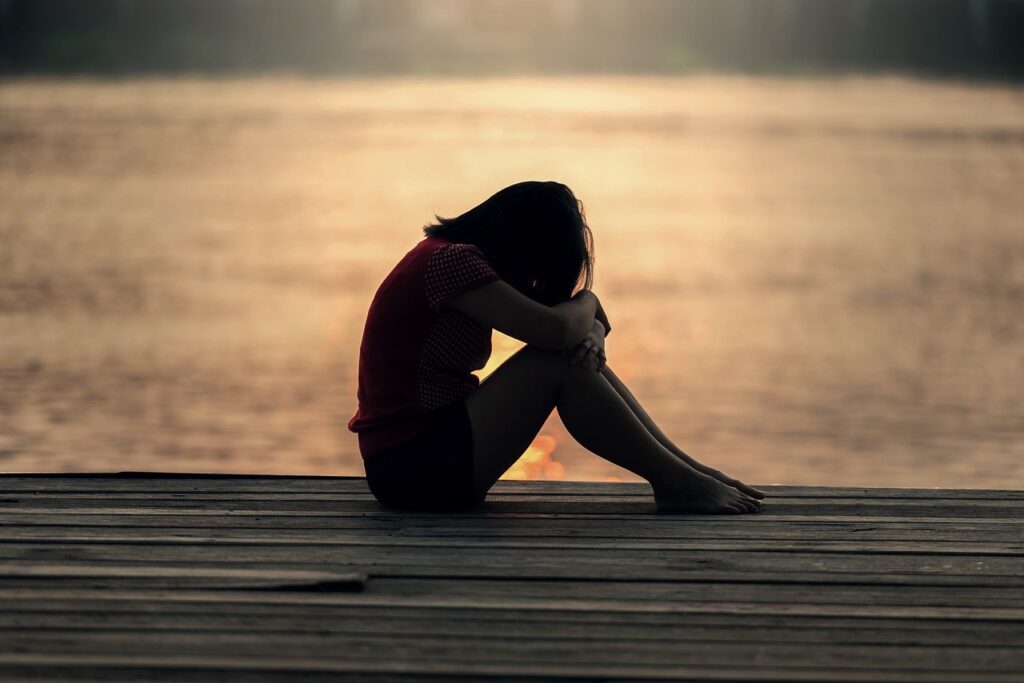Teen depression is on the rise amongst US teens, with teenage girls being found to experience depressive episodes two to three times more often than adolescent boys.
Teen Depression According to Age and Gender
 According to the National Institute of Mental Health (NIMH) depression in teens according to age and gender are represented by:
According to the National Institute of Mental Health (NIMH) depression in teens according to age and gender are represented by:
- 17.3% of depressive episodes occurred in female teens.
- 5.7% of teens who reported a depressive episode were male.
It seems that the teens age seems to be a factor as instances of depression increase with age.
- Almost 6% were 12 years old.
- Almost 9% were 13 years old.
- Almost 11% were 14 years old.
- 13% were 15 years old.
- Just over 14% were 16 years old.
- Just over 15% were 16 years old.
Race and Ethnicity Depression Statistics
The NIMH statistics also show some disparities in depression according to race and ethnicity.
- 11.5% were Hispanic.
- 12.0% were White.
- Just over 9% were Black.
- Almost 7% were Indian or Alaskan natives.
- 12.5% came from 2 or more nationalities.
More Data Revealing the Prevalence of Depression in Teens
Further data reported reveals that around 10 to 15 percent of teens have show symptoms of depression at any one time, and over 8% of teens have instances of depression that lasts more than one year.
According to a 2021 Mental Health America (MHA) report, severe major depression has increased in youth to 9.7%. This is an increase from 9.2% in 2020.
Most teens will experience depression more than once. Reports show that 20-40% of teens have experienced and episode more than once in two years.
70% of adolescents have experienced multiple episodes of depression before the age of 18, with a significant portion of those episodes lasting at least eight months.
The 2021 MHA report states that youth ages 11 to 17 were the most likely age group to score in the moderate-to-severe depression categories when screened for mental health conditions.
Recent Figures Show Depression to be On the Rise In Teens
 Quarantine, loss of social interactions, illness, fear of illness, the loss of loved ones, and financial distress are only some of the compounding and life-altering stressors that teens have faced since March 2020.
Quarantine, loss of social interactions, illness, fear of illness, the loss of loved ones, and financial distress are only some of the compounding and life-altering stressors that teens have faced since March 2020.
These changes have had a lasting physical and psychological impact on U.S. society. According to teen depression statistics in the Stress in America 2020 survey, Generation Z teens and young adults ages 13 to 23 years old have the highest reported increase in stress, uncertainty, and depression symptoms of all age groups.
For all ages, loneliness and isolation trended as the top reason for uncertainty and mental health conditions during the pandemic. The difference is that teens have a smaller “toolbox” of coping skills simply due to less life experience.
Risk Factors of Teen Depression
Any teen, regardless of age, gender, race, social situation, or family income level, can develop depression. But there are a few observable risk factors that seem to increase the likelihood of a depressive episode. These include:
- Abuse or long-term trauma
- Illness or disability
- Family history of depression. It increases the likelihood of a teen, whose family member has had a depressive episode, to repeat the pattern by as much as 50%.
- The teen’s own previous depressive episodes
- Other untreated mental health challenges such as addiction, dysthymia, antisocial behaviors, and anxiety
Studies show that 30% of teens who experience depression later face a substance abuse and addiction problems.
Teens who have depression typically have a smaller circle of friends and tend to neglect educational opportunities leading to further isolation.
Depressed teens are less likely to experience work, relationship, and academic satisfaction.
Depressed teens are also more likely to develop a physical illnesses.
Seek Help if You Need It
Depression is a treatable. Eighty percent of people with depression who seek help achieve a positive outcome.
Sadly, only 33 percent of teens will ask for the help they need.
Parents, friends, adults, pay attention!



